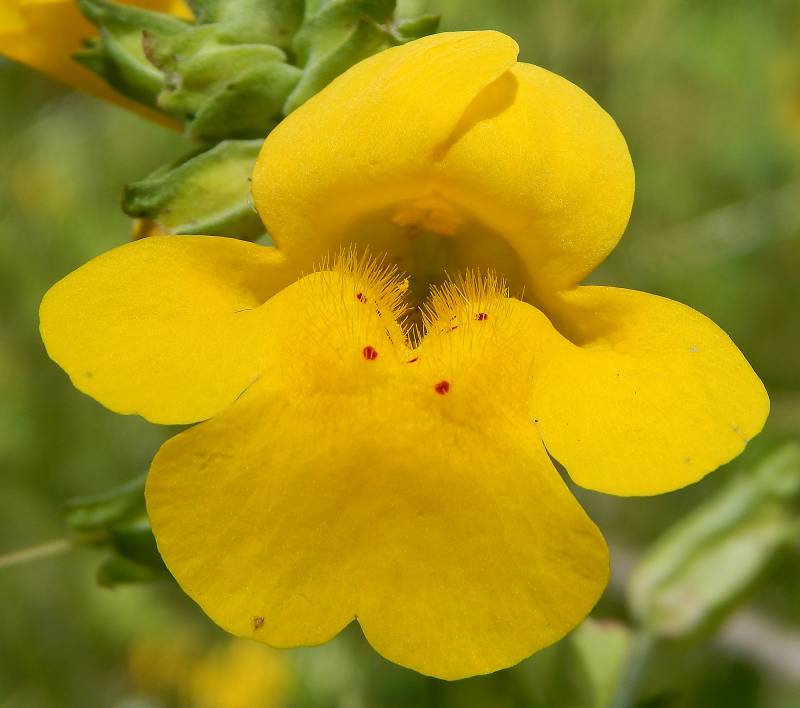Erythranthe decora
Erythranthe ampliata
sharp-leaved monkey-flower, showy monkey-flower
Nez Perce monkey-flower
Leaves mostly cauline, basal leaves generally not persistent;
petioles 8-25 mm near base, 3-5 mm mid-stem, sessile distally;
blade ovate-triangular to ovate-lanceolate, typically 20-50 mm long and 10-30 mm broad, palmate venation with 5-7 veins, base rounded to truncate to shallowly cuneate, margins sharply toothed, apex acute, surfaces occasionally becoming glabrous, distalmost surfaces hairy as stems.
Leaves cauline, basal leaves not persistent; petiolate, 8-20 mm;
blade broad-ovate to lanceolate, 8-25 mm long and 5-19 mm broad, venation palmate, wedge-shaped base, margins toothed or somewhat finely toothed, apex acute to obtuse, surfaces glandular and hairy as stems.
Axillary flowers generally 2-7, emerging from nodes at ends of stems; fruiting pedicels 18-35 mm, distalmost pedicels hairy as stems with hairs often barely deflexed;
calyx green with occasional red spots, ovoid, inflated, compressed across sagittal plane, 15-19 mm, hairy as stems, throat closing, lobe margins villous;
corollas yellow, throat commonly red-spotted, symmetric bilaterally, bilabiate;
tube-throat widely funnel-shaped, 18-26 mm, protruding 10-15 mm beyond calyx margin;
limb expanded 22-30 mm;
styles prominently hirsute to villous;
anthers not protruding, glabrous.
Axillary flowers 1-10, emerging from nodes throughout; fruiting pedicels glandular-hairy as stems, 10-22 mm;
calyx tubular-campanulate, sometimes weakly inflated, 6-8 mm, margins with distinct serration or lobes, sparsely covered with minute stalked glands or not;
corolla yellow with occasional small white patches, lower limb with several brownish spots, bilaterally symmetric and distinctly bilabiate;
tube-throat broadly funnel-shaped, generally 8-12 mm, protruding beyond calyx margin;
lobes obovate-oblong with rounded or truncate apexes;
styles glabrous;
anthers not protruding, glabrous.
Capsules 8-10 mm, included.
Capsules 5-6 mm, included.
Erythranthe decora
Erythranthe ampliata
- Local floras:
BC,
OR,
WA
- Local Web sites:
Flora NW,
PNW Herbaria
WildflowerSearch
iNaturalist (observations)
- LBJ Wildflower Center
- SEINet
- Plants of the World Online
- Encyclopedia of Life
- Wikipedia
- Google Image Search
- Local floras:
WA
- Local Web sites:
Flora NW,
PNW Herbaria
WildflowerSearch
iNaturalist (observations)
- LBJ Wildflower Center
- SEINet
- Plants of the World Online
- Encyclopedia of Life
- Wikipedia
- Google Image Search


